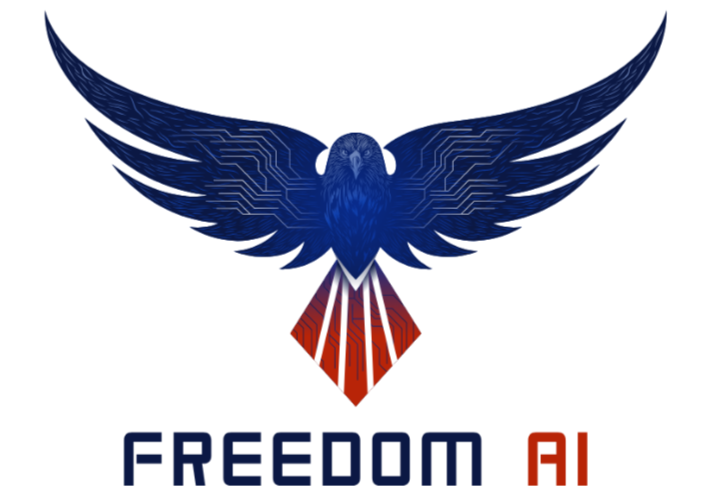How We Test and Verify AI Accuracy at the Freedom Institute AI
The National Conversation: Why Accuracy Matters Now
Across the country, educators and employers are aligning to America’s AI Action Plan. The plan emphasizes transparency, responsible use, and high quality data. This national shift highlights a critical truth. Students cannot simply use AI. They must understand how to evaluate accuracy, question outputs, and verify information independently.
At the Freedom Institute AI, this is foundational. Accuracy is not only a technical concern. It is a learning and workforce readiness concern. We design our programs so learners can confidently interact with AI and assess its reliability in real time.
The New Development: AI Accuracy Checks Are Becoming Built In
One of the most important trends in modern AI tools is the rise of integrated accuracy features. Today’s platforms often provide:
Automatic source citations
Document based generation that reduces fabrication
Side by side output comparison
Bias and consistency indicators
These tools are not perfect. They are starting points that help students ask better questions and evaluate information more effectively.
Instructors teach the importance of checking sources
Application at School and at Home
Our verification process is simple, repeatable, and taught across all Freedom Institute AI coursework. Whether students are writing a research paper, preparing for a presentation, or exploring a new concept, the same five step routine applies.
1. Check the Sources
Students open citations, confirm details, and cross reference information with trusted materials. If citations are missing, independent verification becomes part of the assignment.
2. Compare Multiple Outputs
We often ask AI tools to generate several versions of the same response. Students decide which version is the most factual, clear, or aligned with expectations.
3. Use Domain Knowledge
Students rely on class notes, textbooks, professional standards, or lived experience. AI supports understanding, but human judgment leads.
4. Identify Confident Mistakes
AI often sounds certain even when incorrect. Students flag overly confident statements, unrealistic statistics, or logic that lacks evidence.
5. Use Verification Tools
We incorporate plagiarism scanners, reading level analyzers, grammar tools, code validators, and fact checking extensions. Students learn to think like researchers and analysts.
Workforce Readiness: Accuracy Is a Career Skill
Employers want people who evaluate information rather than simply accept it. Students who master accuracy verification build strengths that businesses value:
Research habits
Critical thinking
Clear communication
Data literacy
Documentation and analysis
We reinforce a core belief. AI will not replace people. People who know how to use AI will replace those who do not.
Verification is a career skill.
Future students working on a project evaluating model accuracy for real-world tasks.
Responsible Use
Accuracy is only part of responsible AI use. We also teach students to identify and manage:
Bias in training data
Privacy considerations
Overreliance on automation
Incomplete or misleading reasoning
Digital citizenship is central to our mission. Students learn that AI is powerful, but it requires careful evaluation and human oversight.
Equity and Access
AI literacy should not depend on a school’s budget. That is why we use free and low-cost tools whenever possible. Our accuracy verification model works across a wide range of platforms so every student gains the same essential skills: evaluating information, questioning outputs, and thinking critically in an AI-driven world.
A Story from Our Classrooms
Earlier this year, one of our teachers shared a moment that captured exactly why accuracy instruction matters. She noticed that students were increasingly turning to AI for quick summaries of their reading assignments. One day, a group of students confidently presented an AI generated explanation of a novel they had been studying.
The summary sounded polished, but something was off. A key character motivation was described incorrectly. When the teacher asked the students how they knew the explanation was accurate, they paused. None of them had checked it.
This opened the door to a powerful discussion. The teacher walked them through the Freedom Institute AI verification routine. Together they compared the AI output with the actual text, highlighted where details diverged, and discussed why the errors mattered.
By the end of the conversation, students realized something important. AI is helpful, but accuracy cannot be assumed. Several shared that they now double check every AI generated summary, even in subjects they feel confident about.
This moment did more than correct a misunderstanding. It built awareness, confidence, and healthy skepticism, which is exactly what we want for every learner.
Evidence and Voice of Authority
Research from Stanford’s Human-Centered AI Institute shows that large language models can still generate incorrect information at high rates. Even advanced systems can produce confident, polished, and entirely fabricated responses. This is why verification skills matter. At the Freedom Institute AI, we never assume accuracy. We teach learners how to test it.
Call to Action
Enroll today in the Online AI High School, apply for a Career AI Certificate or the Freedom AI Credential, or schedule an AI Business Training. https://www.freedominstitute.ai/enroll
Vision Tie Back
At the Freedom Institute AI, we believe workforce readiness begins in the classroom and carries into every career. By giving students, families, and businesses the tools to use AI well, including how to test and verify its accuracy, we are building the foundation for tomorrow’s success.


